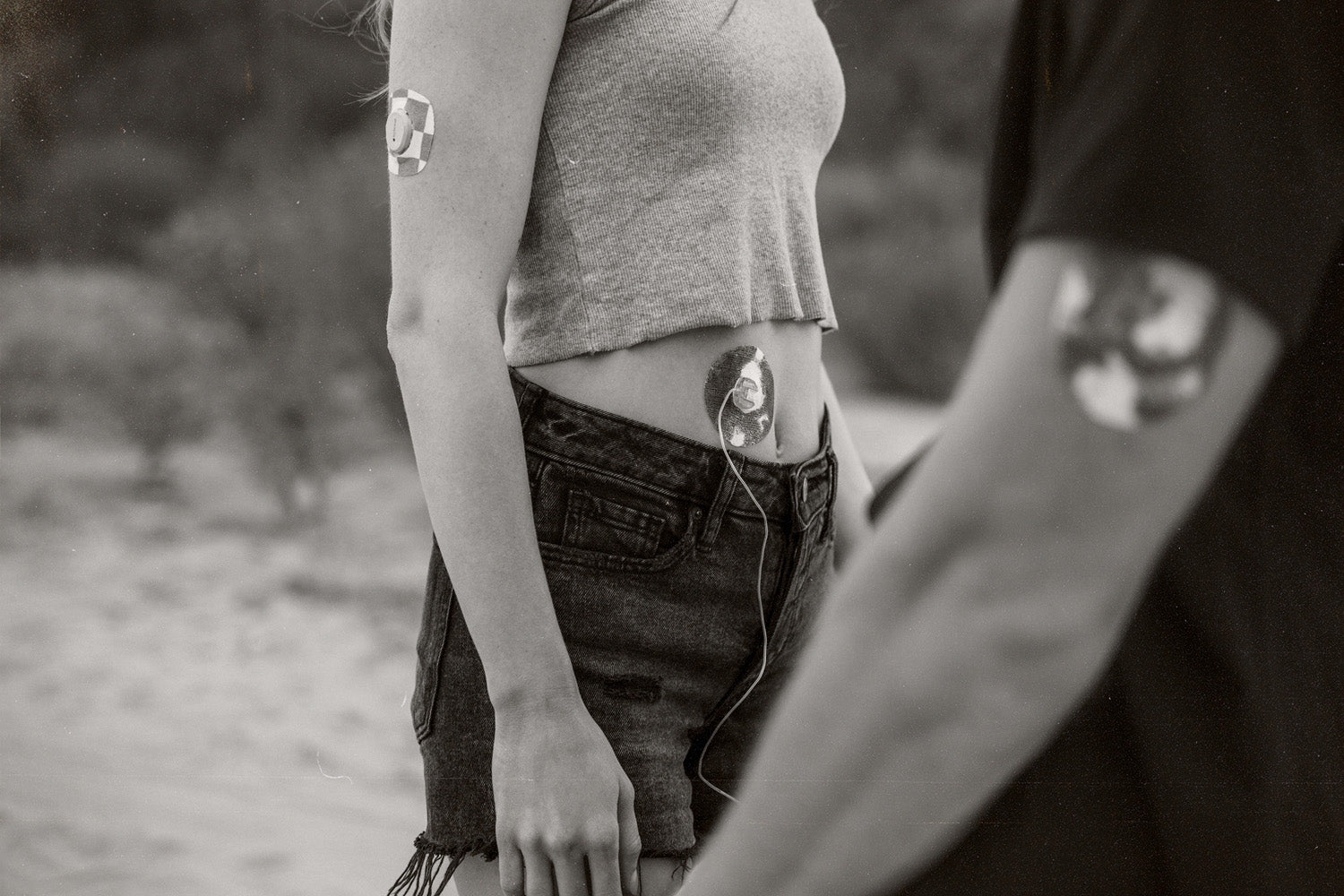Disclaimer: All content and information in this blog is for informational and educational purposes only. For the latest information, please visit the manufacturer’s website. Last updated on 5/28/2025.

Whether you are cannonballing into the pool, soaking up the sun at the beach or just relaxing in a bubbly hot tub, chances are you’ve probably had a familiar moment of panic: Can I swim with my CGM? What about my insulin pump? Will everything stay stuck? And more importantly, will it keep working?
Can I Swim with My CGM?
TL;DR: Yes, your CGM sensor can, but your receiver can’t.
Most CGM sensors are built to withstand water, at least for short swims, splash fights, and your best Martha Washington impersonation for about 30 minutes give-or-take. That said, while your sensor may be waterproof, your receiver or display device aren’t and definitely need to stay dry.
Heads Up – Bluetooth and water aren’t exactly besties. So while you’re out playing mermaids, don’t be shocked if you see a signal error message on your display device. Once you’re back on dry land, your sensor readings should reconnect and catch up within 10 minutes.
How to Keep CGM on While Swimming
Your CGM sensor wasn’t exactly designed to withstand belly flop contests and full-contact Marco Polo– yet here you are, determined to make it work anyway. While most sensors are technically waterproof, the trusty adhesive that keeps them stuck to your skin is another story. Chlorine, saltwater, sunscreen and spontaneous dives can have your sensor clinging on for dear life. Here’s how to keep your CGM firmly in place while you’re making waves:
-
Prep Your Skin: Wipe away sweat, sunscreen and any lingering regrets from last weekend before applying your new sensor. Clean and dry skin gives your adhesive the best chance of survival.
-
Use Overpatches: Waterproof overpatches (like ours, wink wink) add an extra layer of security that can mean the difference between “held on like a champ” and “lost to the deep end.” .
-
Avoid Lotions or Sunscreen: We love a sun-kissed glow, but greasy skin = slippery sensor. Apply lotions and sunscreen around your site, not on it.
-
Pat Dry: When getting out of the water, gently pat your sensor area dry like a newborn baby. No scrubbing. No friction. Just tender, loving towel taps to avoid any adhesive slip ups.
-
Reinforce as Needed: If your sensor is looking a little rough after your swim, reinforce with adhesive tape or adhesive barrier wipes while whispering sweet nothings like, “hang in there buddy, you only got 3 more days left.”
Can I Go in a Hot tub with My CGM?
Technically? Yes. Realistically? Proceed with caution.
Most CGMs can handle brief exposure to warm water, but hot tubs typically exceed the temperature range your sensor is comfy with. That kind of steamy situation can throw off your readings and mess with your sensor adhesive. If you want to soak in a hot tub, keep it short and do your best to plan ahead of time by wearing it on a spot that you can keep out of the water.
Can I Swim with My Insulin Pump On?
Tethered Pump Users:
Most tubed insulin pumps aren’t exactly built for underwater adventures. So unless your pump takes an unexpected swim, it is best to disconnect before diving in. Keep tabs on how long you’re splashing around because no insulin delivery + poolside snacks = a potential glucose rollercoaster.
Tubeless Pump Users:
Good news, Pod people– no need to disconnect before you swim! Just keep an eye on how long and how deep you’re going, because your pod has limits. Pro tip: stick on an overpatch so it stays in place!
What to Do If Your Insulin Pump Gets Wet
If your insulin pump goes for a swim without your permission, don’t panic (okay, panic a little- but do it while taking action).
-
Dry it off- Use a towel to dry off your pump. Avoid heat or hair dryers– this isn’t the time for extreme measures.
-
Check for malfunctions- Look for alerts, error messages or broken screens. If your pump is suddenly acting possessed, that’s your cue to move onto step three.
-
Call the manufacturer- They’ve heard it all– from pumps dropped in hot tubs to ones rescued from toilets. They’ll walk you through next steps, warranty details or at least offer emotional support.
-
Have a back up plan- If your pump is officially out of commission, break out your backup supplies. Use manual injections or a backup pump until a replacement pump comes in.






























